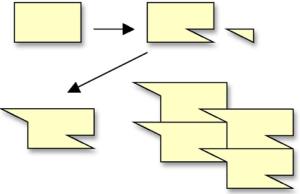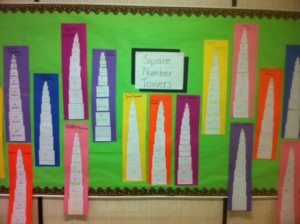 Tessellations are a fun way to play with shape and space, a strand in the mathematics curriculum. A tessellation is a shape or combination of shapes which cover a two-dimensional surface without leaving any gaps. For example, square or rectangular tiles, common in houses, do this nicely, as do other shapes such as equilateral triangles, right triangles, and regular hexagons.
Tessellations are a fun way to play with shape and space, a strand in the mathematics curriculum. A tessellation is a shape or combination of shapes which cover a two-dimensional surface without leaving any gaps. For example, square or rectangular tiles, common in houses, do this nicely, as do other shapes such as equilateral triangles, right triangles, and regular hexagons.
It is easy to create an interesting shape that tessellates by altering a shape that already tessellates. The important thing is to cut out a chunk of the tessellating piece, and then reattach it in such a way that the new altered shape will still be able to tessellate (see illustrations below for possiblilites).
I can hardly think about tessellations without thinking of the work by the Dutch artist M.C. Escher who did some amazing work in tessellations. This is a picture of one of his paintings called “Two Birds”. Check out this link to look at more of Escher’s work in this area.
Creating tessellations is a great activity for home or classroom, and even the most reluctant artist can create unique and wonderful pictures in this way. Thanks to Miss Norris for allowing me to post her students’ examples. Tessellations make a great math bulletin board!
I hope you will give tessellations a try!
Mathematically yours,
Carollee








